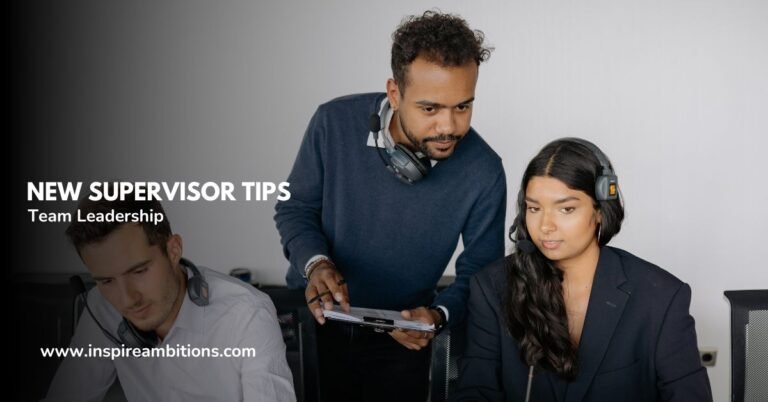The Power of Active Listening – Tips for Boosting Your Empathy Skills
Active listening is more than just hearing someone speak.
When you’re actively listening, you’re fully engaged in what the speaker is saying, understanding their message, interpreting their emotional tone, and responding thoughtfully.
This form of communication is vital because it fosters a deeper level of trust and rapport in both personal conversations and professional interactions.
In any conversation, there are several types of active listening you can employ to enhance the exchange. These include paying close attention to the speaker, minimizing your distractions, and confirming understanding through Feedback like summarizing or asking clarifying questions.
Each method serves to assure the person speaking that their message is valuable and recognized, thereby establishing a meaningful connection.
By integrating active listening techniques into your conversations, you not only gain a more comprehensive understanding of what’s being communicated but also contribute to a more productive and collaborative environment. Whether in a team meeting or a one-on-one discussion, these skills can lead to more effective problem-solving and decision-making.
Fundamentals of Active Listening
Active listening is a crucial skill that can dramatically enhance your personal and professional relationships. By mastering its fundamental principles, you will be able to connect with others more effectively.
Core Principles and Attitudes
To genuinely engage in active listening, you must adopt certain core principles and attitudes that form the foundation of this practice:
- Respect: Show genuine regard for the speaker’s perspective.
- Empathy: Try to understand the speaker’s emotions and viewpoint.
- Trust: Create a safe space where meaningful dialogue can flourish.
- Attention: Give the speaker your full, undivided attention.
- Patience: Allow the speaker time to articulate their thoughts without rushing them.
By integrating these attitudes into your daily interactions, you’re more likely to forge stronger, more empathetic connections.
Active Listening Skills
Active listening involves a set of specific skills that improve understanding and trust:
- Verbal Acknowledgment: Use simple affirmations like “I see” or “I understand” to show you’re engaged.
- Nonverbal Signals: Maintain consistent eye contact and adopt open body language to show attentiveness.
- Reflecting Feelings: Paraphrase the speaker’s sentiments to demonstrate comprehension.
- Clarifying: Ask questions to gain deeper insight into the speaker’s message.
- Summarizing: Briefly recap the key points to ensure nothing is missed.
These skills can be practised and improved over time, helping you become a better listener.
Active Listening in Different Contexts
Active listening is versatile and applicable across various scenarios:
- In Work: Enhances collaboration and reduces misunderstandings.
- In Relationships: Builds deeper emotional connections and fosters mutual respect.
- For Mental Health: Helps individuals feel heard and valued, which can contribute to emotional well-being.
Whether you’re in a meeting or a casual conversation, applying active listening can significantly enhance the quality of interaction.
Remember, active listening isn’t just about hearing words; it’s about understanding the complete message, both spoken and unspoken, and responding with care. By practising these fundamentals, you can improve every aspect of your communication.
Techniques and Implementation
Active listening is a skill that can elevate the way you communicate and understand others. By focusing on specific techniques and consistent practice, you can enhance your listening skills significantly.
Enhancing Verbal and Nonverbal Techniques
Verbal Techniques:
- Ask Open-Ended Questions: These types of questions encourage your conversation partner to share more than yes or no responses.
- Reflecting: Paraphrase what the speaker has said to show that you understand and are engaged.
- Summarizing: Offer a condensed version of what’s been said to confirm comprehension and retain the main points.
Nonverbal Techniques:
- Observe Nonverbal Cues, like gestures and facial expressions, to gain more insight into the speaker’s emotional experience.
- Use Silence strategically to allow for reflection and to give speakers a chance to elaborate.
- Display an Empathetic Presence, showing through your body language that you are fully attentive.
Practical Exercises and Improvement Strategies
Exercises:
- Role-playing: Practice by simulating conversations and switching between being the listener and the speaker.
- Mindful Listening: Dedicate a portion of your day to actively listening to sounds around you, helping you to focus on the present moment.
Improvement Strategies:
- Eliminate Distractions by turning off notifications and finding quiet spaces for conversation.
- Continually seek Feedback on your listening skills from trusted peers to identify areas for improvement.
Overcoming Barriers to Effective Listening
Identify your Barriers:
- Recognize any Bias or Judgment you may bring into a conversation that could hinder your ability to listen openly.
Implement Solutions:
- Critical Listening: Sharpen your ability to analyze and critically assess what you hear.
- Use Reflective Questions to clarify points and reduce miscommunications.
Cultivate a Collaborative Mindset:
- Embrace Comprehension and Collaboration as critical elements of any conversation, viewing it as a joint effort in problem-solving and understanding.
By focusing on these techniques and strategies, you can become a more effective communicator. Remember that active listening requires intention and practice, and it’s a skill that will serve you in all areas of life.







